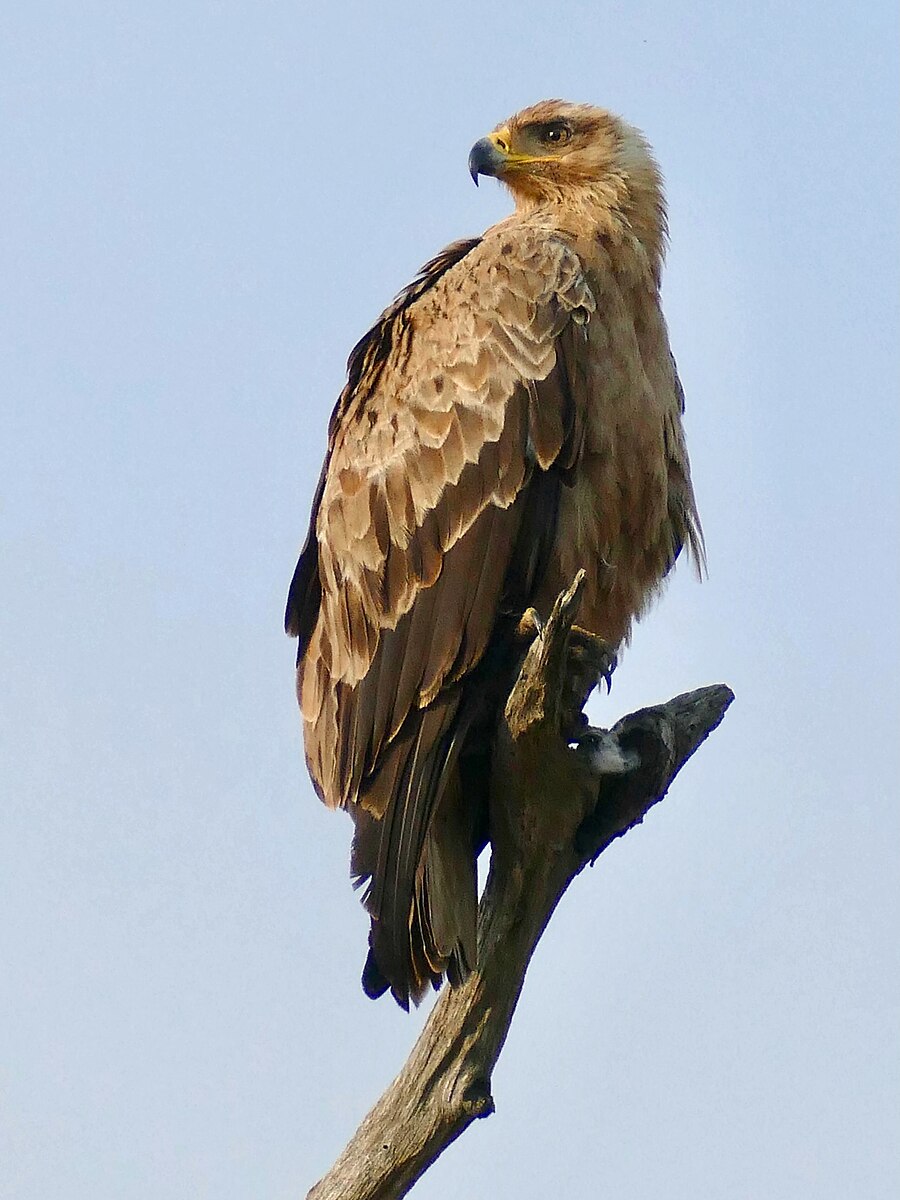Tawny eagles (Aquila rapax) are diurnal raptors, meaning they are primarily active during the day and have adapted to hunt in daylight conditions. While they possess excellent daytime vision, there is no scientific evidence to suggest that tawny eagles can see clearly or effectively at night.
Tawny Eagles’ Eye Anatomy and Adaptations
Tawny eagles have their eyes positioned at the front of their head, providing them with binocular vision. This is beneficial for judging distances and depth perception during the day. However, their eyes are not adapted for low-light conditions like those of nocturnal birds such as owls.
Owls have several key adaptations that allow them to see well at night:
- Larger eyes: Owls have eyes that are 2.2 times greater than the average for birds of the same weight.
- Positioning of eyes: Owls’ eyes are positioned at the front of their head, providing them with binocular vision.
- Higher rod cell density: Owls’ retinas have about 56,000 light-sensitive rods per square millimeter, significantly higher than the number found in tawny eagles.
- Tapetum lucidum: Owls have a reflective layer called the tapetum lucidum, which increases the amount of light each photosensitive cell receives, allowing the bird to see better in low light conditions.
In contrast, tawny eagles have a high number of cone cells, which are responsible for color vision and are less sensitive to light than rod cells. This suggests that tawny eagles rely more on color vision during the day and are not adapted to see in low-light conditions.
Tawny Eagles’ Hunting Behavior and Adaptations
 Image source: Tawny Eagle by Bernard DUPONT
Image source: Tawny Eagle by Bernard DUPONT
Tawny eagles are known to be excellent daytime hunters, using their keen eyesight to spot prey from a distance. They are adept at hunting small to medium-sized mammals, birds, and reptiles during the day. Their binocular vision and depth perception allow them to accurately judge distances and make precise strikes.
However, tawny eagles do not possess the same adaptations as nocturnal birds like owls, which are equipped to hunt effectively in low-light conditions. Tawny eagles are not known to be active or successful hunters at night.
Comparison with Nocturnal Birds
Owls, which are the most well-known nocturnal birds, have several adaptations that allow them to see and hunt effectively at night:
| Adaptation | Tawny Eagles | Owls |
|---|---|---|
| Eye size | Smaller | Larger (2.2 times greater than average) |
| Eye positioning | Front of head (binocular vision) | Front of head (binocular vision) |
| Rod cell density | Lower | Higher (56,000 per sq mm) |
| Tapetum lucidum | Absent | Present (reflective layer) |
| Hunting behavior | Diurnal (daytime) | Nocturnal (nighttime) |
The differences in eye anatomy and adaptations between tawny eagles and owls clearly demonstrate that tawny eagles are not equipped to see and hunt effectively at night. Their visual system is optimized for daytime activities, while owls have evolved specialized adaptations for low-light conditions.
Conclusion
In conclusion, tawny eagles (Aquila rapax) are diurnal raptors and do not have the same adaptations as nocturnal birds like owls to see clearly or effectively at night. While they possess excellent daytime vision and hunting abilities, there is no scientific evidence to suggest that tawny eagles can see well in low-light conditions. Their eye anatomy and hunting behavior are optimized for daytime activities, making them ill-suited for nighttime hunting.
References:
– https://animaldiversity.org/accounts/Aquila_rapax/
– https://www.getaway.co.za/travel/travel-ideas/how-much-do-you-know-about-the-majestic-tawny-eagle/
– https://en.wikipedia.org/wiki/Bird_vision
– https://a-z-animals.com/articles/the-top-birds-with-the-strongest-and-best-eyesight/

